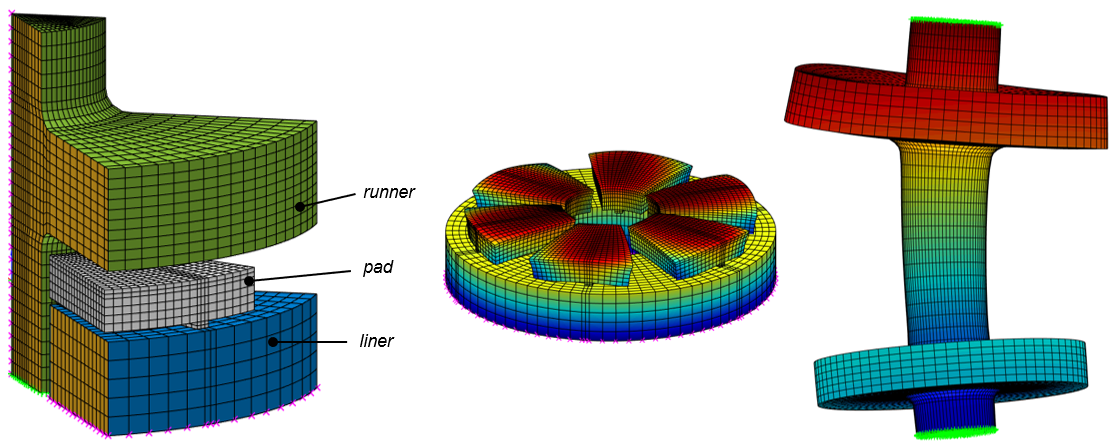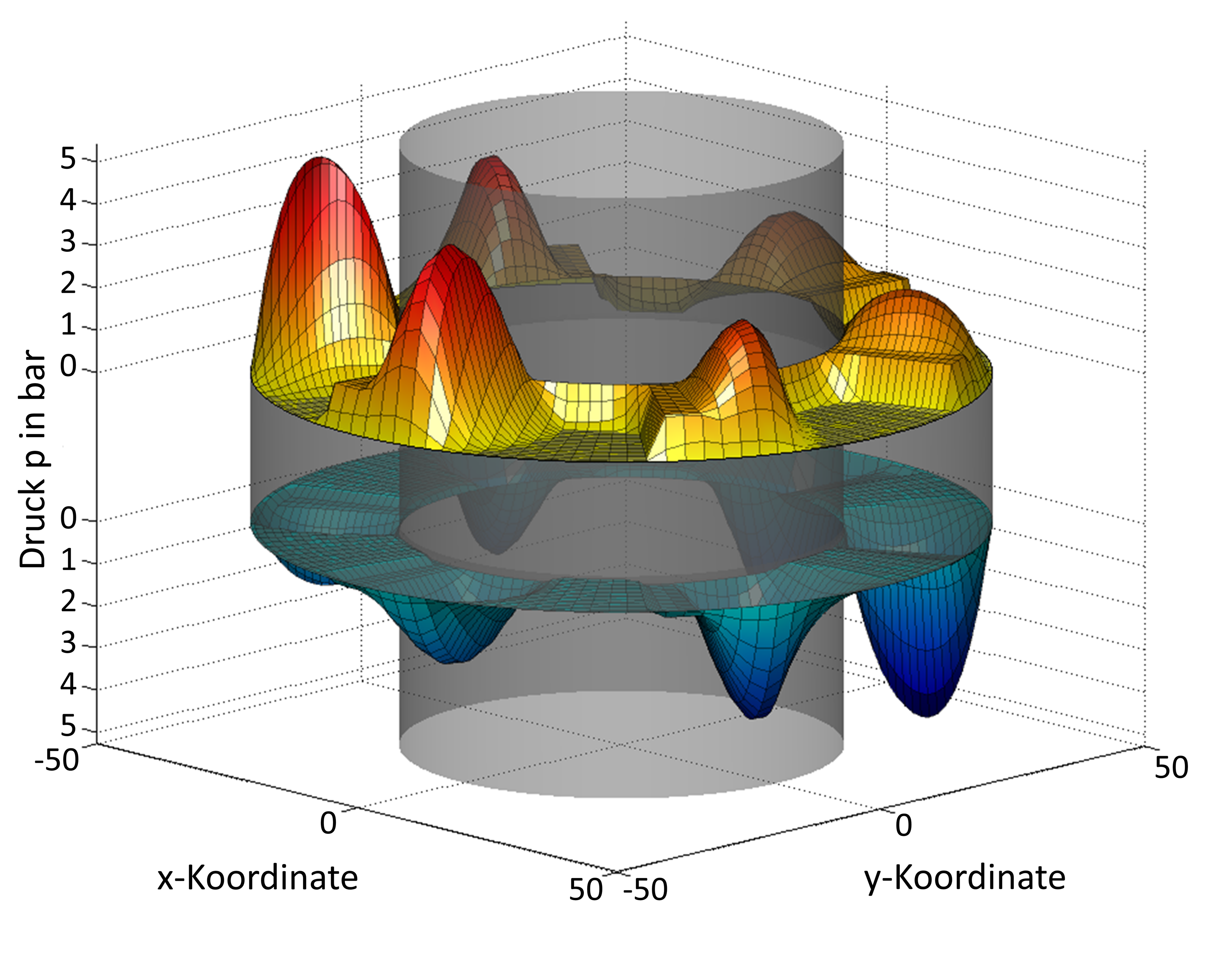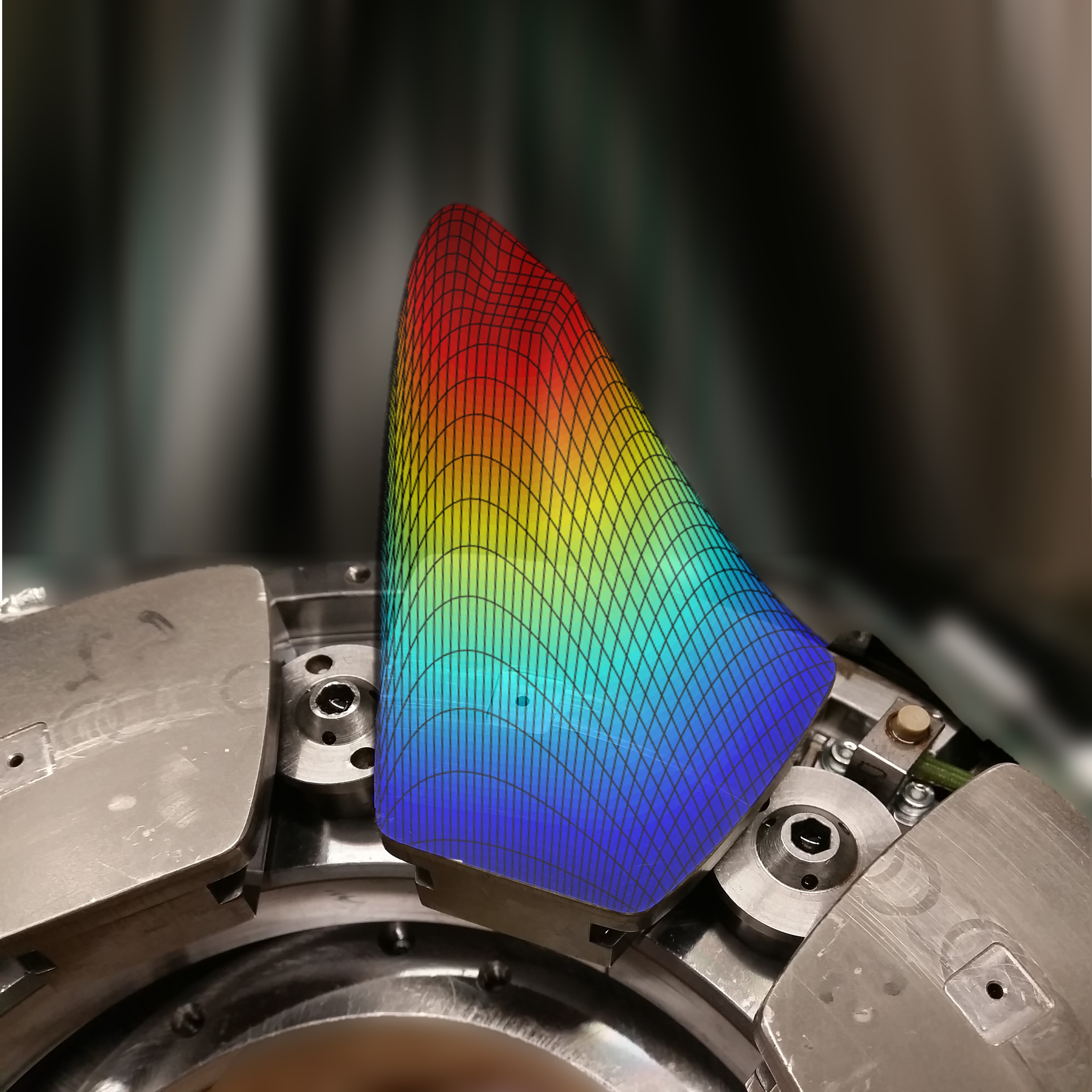The COMBROS A plain bearing calculation program enables the isothermal and non-isothermal calculation of the static and dynamic bearing characteristics of hydrodynamically lubricated axial plain bearings in single and double-acting arrangements.
This involves
- Precise recording of the segment geometry (profiling, oil feed pockets and grooves, lateral sealing webs including dirt grooves)
- Deviations in the lubrication gap geometry are taken into account using a 2D lubrication gap function
- Simultaneous (iterative) calculation of the pressure, temperature, viscosity and density distribution in the lubrication gap, the temperature distribution in the track disk(s) and segment base body(ies) and the effective lubrication gap geometry with approximate consideration of relevant ambient conditions
- Consideration of the hydraulic, mechanical and energetic coupling of the individual lubricating films of the bearing
- Detection of the lubrication gap flow in diverging gap areas with the aid of a cavitation model (JFO model)
- Direct detection of the lubrication gap flow due to the centrifugal force effect
- Modeling of the oil feed process for flooded lubrication of fixed-segment bearings
- 2D calculation of the pressure distribution in the entire lubrication gap including the sealing gaps (solution of the extended Reynolds equation)
- 3D calculation of the temperature and viscosity distribution in the lubrication gaps (solution of the energy equation)
- Consideration of the temperature dependence of the oil viscosity
- 3D/2D calculation of the temperature distribution in the segments or in the tracking disk(s) (solution of the heat conduction equations)
- Consideration of the heat transfer between the lubricating film and segments/track disk as well as between the segment/track disk and the environment
- Consideration of the heat transfer between the segment and the lubricating film for coated segments
- Consideration of compliance in the segment support for tilting pad bearings (surface support, line and point contact)
- Modeling of the lubricating film turbulence (change in the effective viscosity and heat conduction of the oil) through local description of the flow form and the transition from laminar to turbulent flow
- Extended modeling for thermal pocket mixing (ideal injection lubrication)



